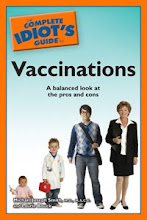I’ve been writing about epilepsy recently, a neurological disorder that affects about 1% of the population (especially infants, young children, and the elderly). With the roughly 80 million Baby Boomers starting to retire now, the number of people with epilepsy will increase even more, since the incidence increases in people 65 and over.
Despite these statistics, however, epilepsy research is underfunded for its incidence rate. This is due in part to stigmas that still surround epilepsy, such as the misconceptions that epilepsy is a sign of mental illness or low intelligence, or that it is contagious. These stigmas make some epilepsy patients and families reluctant to speak out about the disease, and consequently there is less patient advocacy for research funding. In medicine as in life, the loudest voices often get the most attention.
It doesn’t help that the National Institute of Neurological Disorders and Stroke (NINDS) lists the National Organization for Rare Diseases (NORD) website as a helpful organization for epilepsy patients, thus implying that epilepsy is a rare disorder. Perhaps NINDS refers readers to NORD because epilepsy is an umbrella term for a group of benign and malignant neurological syndromes, and some of these syndromes are less common than others. Since the incidence of epilepsy is bound to increase in the future, however, I think it’s important to rethink how to categorize epilepsy. It is complicated? Yes. Is it rare? No.
Semantics, stigmas, politics, money: how is medical research funded?
Thursday, November 29, 2007
Subscribe to:
Posts (Atom)



